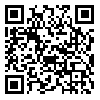BibTeX | RIS | EndNote | Medlars | ProCite | Reference Manager | RefWorks
Send citation to:
URL: http://jsmt.khu.ac.ir/article-1-110-en.html
The purpose of this study was to determine the effect of two different intensities
of physical activity on circulating endothelial progenitor cells (EPC) in healthy
young women. For this purpose, 15 female students from volunteers were
randomly selected via questionnaire (group 1: mean age 22 ±1/8 years, BMI
20/81±1/91 kg/m2, n = 8. group 2: mean age 21 ±1/5 years, BMI 20/38 ± 1/66
kg/m2, n = 7). Each group ran 30 minutes at their particular (group 1: ٧0%
HRmax & group 2: ٨5% HRmax) activity on treadmill. Blood samples were
taken from all subjects for measurement of circulating endothelial progenitor
cells CD34+ and same Isotype control, white blood cells and platelets before
and10minutes after the test. The related T-test (paired) were used for
comparisons within a group , to compare variables between groups were used
one way of variance analysis (ANOVA) for determining the relationship between
variables were used Pearson correlation coefficient. Statistical significance was
accepted as a P value of <0.05. Results of this study showed that both
intensities of physical activity increased significantly the number of EPC, WBC
and Plt, this affects was higher in intensity 85% HRmax, but was not statistically
significant. Just was observed significant association between EPC and platelet.
In summary, can be expressed that physical activity with intensity 70% and 85%
HRmax can increase re-enthotelialisation due to mobilization of EPC, and with
attention to significant association between EPC and platelet these cell
mobilization may serve as a physiologic repair or compensation mechanism in
acute inflammatory injury.
Received: 2016/08/31 | Accepted: 2016/08/31 | Published: 2016/08/31
| Rights and permissions | |
 |
This work is licensed under a Creative Commons Attribution-NonCommercial 4.0 International License. |




